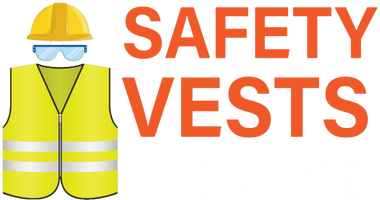
What Are Safety Goggles Used For?
Understanding the Importance of Safety Goggles: A Comprehensive Guide
In the world of safety equipment, one item stands out as a crucial tool for protecting your eyes: safety goggles. Whether you're working in a construction site, a laboratory, or engaging in DIY projects at home, safety goggles are essential for safeguarding your vision from potential hazards. In this comprehensive guide, we'll delve into the importance of safety goggles, their various uses, and why they are a non-negotiable component of personal protective equipment (PPE).
The Basics of Safety Goggles
Safety goggles are specialized eyewear designed to protect the eyes from harmful substances, debris, chemicals, and other hazards. Unlike regular glasses or sunglasses, safety goggles are constructed with impact-resistant materials and feature sealed frames and lenses to provide complete coverage and protection for the eyes.
What Are Safety Goggles Used For?
Safety goggles serve multiple purposes across various industries and activities. Here's a breakdown of their primary uses:
-
Eye Protection in Hazardous Environments: Safety goggles are indispensable in workplaces where there is a risk of flying debris, chemical splashes, or airborne particles. Industries such as construction, manufacturing, and woodworking expose workers to these hazards regularly. Safety goggles create a barrier between the eyes and potential dangers, reducing the risk of injuries and preserving vision.
-
Chemical Splash Protection: Laboratories, research facilities, and industrial settings often deal with hazardous chemicals that can cause severe damage if they come into contact with the eyes. Safety goggles with chemical-resistant lenses and sealed frames provide an effective shield against accidental splashes, spills, or fumes, preventing chemical injuries and contamination.
-
Welding and Metalworking: Welding processes emit intense heat, sparks, and UV radiation, posing significant risks to the eyes. Specialized welding goggles with tinted lenses and side shields protect welders from arc flash, infrared radiation, and debris generated during welding, ensuring eye safety and clarity of vision.
-
Sports and Recreational Activities: In addition to industrial applications, safety goggles are essential for athletes and outdoor enthusiasts engaged in sports such as skiing, snowboarding, cycling, and racquetball. Sports goggles with impact-resistant lenses shield the eyes from fast-moving objects, impacts, and UV rays, reducing the likelihood of sports-related eye injuries.
-
Medical and Healthcare Settings: Healthcare professionals, including surgeons, nurses, and laboratory technicians, rely on safety goggles to shield their eyes from bloodborne pathogens, infectious fluids, and airborne contaminants during medical procedures and patient care activities. Goggles with anti-fog coatings and comfortable seals offer clear vision and maximum protection in clinical environments.
Key Features of Safety Goggles
When choosing safety goggles, several features and considerations are essential to ensure optimal protection and comfort:
-
Impact Resistance: Look for safety goggles with lenses made from durable materials such as polycarbonate, which offer high impact resistance and meet ANSI Z87.1 standards for safety eyewear.
-
Sealed Design: Opt for goggles with sealed frames or foam padding around the eyes to prevent dust, debris, or liquids from entering and causing irritation or injury.
-
Chemical Resistance: For environments with chemical hazards, select goggles with chemical-resistant lenses and coatings to withstand exposure to acids, solvents, and corrosive substances.
-
Ventilation: Adequate ventilation is crucial to prevent fogging and maintain comfort during prolonged wear. Choose goggles with indirect ventilation systems or anti-fog coatings to minimize fogging while ensuring airflow.
-
Adjustable Straps: Adjustable straps or temples allow for a customized fit and secure positioning, ensuring that the goggles remain in place during activities and movements.
Conclusion
In conclusion, safety goggles are indispensable protective equipment designed to safeguard the eyes from a wide range of hazards, including impact, chemical exposure, and UV radiation. Whether you're working in an industrial setting, engaging in recreational activities, or performing household chores, wearing safety goggles is a proactive measure to prevent eye injuries and maintain visual health.
By understanding the importance of safety goggles and their various applications, individuals can make informed decisions when selecting the appropriate eyewear for their specific needs. Remember, investing in quality safety goggles is an investment in your safety, well-being, and long-term vision protection. Stay safe, stay protected, and prioritize eye safety in all your endeavors.
For more information on safety goggles, PPE, and eye protection solutions, visit Safety Vests and More today. Your vision matters, and we're here to help you safeguard it every step of the way.
